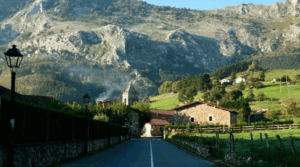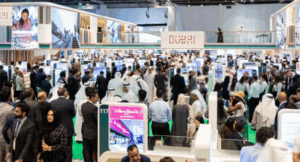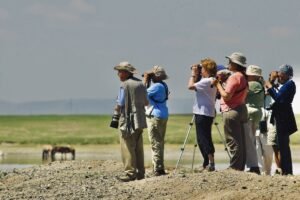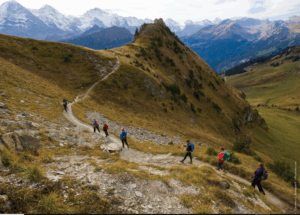Is Bhutan the happiest place?
– Andrew Buncombe
Within a stone’s throw of Bhutan’s legendary Tiger’s Nest, with lungs burning and heart pounding, misery descends. Smug, grinning hikers are making their way along the narrow, vertiginous path as they return from the monastery set on the side of the cliff, but with vertigo having turned legs and spirit to mush, it appears I am going nowhere.
A little while later, with the encouragement of a patient partner and the hand-holding of the tour guide, we are across the gap, beguiled by the majesty of the monastery’s location and stunned by the ambition of its architect. I start to feel content, even happy. And then comes the realisation: we have to make it back the very same way.
It is hard not to think about happiness in Bhutan, a Buddhist kingdom set high in the Himalayas between India and China. As the country has gradually opened itself to the West and its tourists’ dollars, so it has projected and exported its philosophy of ‘gross national happiness’ (GNH), a belief that a society should be measured not simply by its material indicators but by the health, education and the contentedness of its people. Such is the pervasiveness of the idea that last year, the UN adopted a non-binding resolution that ‘happiness’ should be included among development indicators. The notion sounds fantastic – genuinely radical, even – but is it anything more than a clever piece of global marketing by the Bhutanese, looking to secure their own unique brand amid the multitude of nations?
“It sounds like a fairytale, but for Bhutan it has not been so. A young king saw the world and saw it for what it was,” said Thakur Powdyel, the country’s education minister and one of its most elegant exponents of GNH. “He saw that while the world had achieved economic progress, there were huge gaps and deficiencies. As young as he was, he felt that the ultimate goal of life was to be happy.”
On the day I arrived in Bhutan, a high-octane adrenaline flight that weaves its way past stunning mountains, a front-page story in the state-run Kuensel newspaper claimed a survey had revealed people from the Haa district in the west of the country were apparently the happiest. By contrast, those from Pemagatshel in the east, were the least content. At dinner that evening in the capital, Thimpu, I asked the waitress, Dorji Mo, a cheerful young woman whose family came from Pemagatshel, why that may be so. “It takes three days to reach my grandparents’ village. I have to walk across 10 rivers,” said the 19-year-old. “And in the village, there is still no electricity.”
One thing that rapidly becomes apparent when you arrive in the country, is that it is no Shangri-La, despite the claims of some tourism agencies. People are friendly, but no more so than anywhere else in the region; there is poverty, especially in the rural areas, and in a nation where television arrived only in the late 1990s, there are enduring concerns about the dilution of traditional culture.
This young democracy – the country was an absolute monarchy until four years ago – is confronting a series of challenges, perhaps most pertinently providing meaningful jobs for its young people. Increasing urbanisation and a shift away from farming, means there are growing numbers of young adults who do not want to take on work at their family’s farm. There are social problems, too; drug abuse and rowdy gangs. Recently, in an unprecedented incident, two police officers in the capital were beaten by a group of youths. Last month, four young men were stabbed in two separate attacks. “What is happening in our GNH nation?” asked one poster on a Facebook page run by social activists.
The idea of gross national happiness was developed by Bhutan’s previous monarch, the fourth king, Jigme Singye Wangchuck. Returning from a conference of non-aligned nations in Havana, from where he reportedly developed a liking for Cuban cigars, the king’s plane stopped in India where a reporter asked the monarch about the economy of the mysterious Himalayan nation. “In Bhutan, we don’t just care about gross national product, we care about gross national happiness,” the king is said to have retorted.
Three decades on, the philosophy has been expanded into a guiding principle based on four central pillars – equitable social development, cultural preservation, conservation of the environment and promotion of good governance – with up to 72 smaller “indices”. A GNH commission oversees all government decisions and approves or blocks them depending on whether they fit with these aims. I was told that the commission often steps in and puts a stop to proposals, among them a spa project in the remote town of Gasa that the king had reportedly supported but which local people did not.
The grass certainly grows green in Bhutan. There is free health care and free education and since 1980 life expectancy has increased by 20 years and per capita income by 450 per cent. Today, in terms of life expectancy, the amount of education received and income, Bhutan ranks above the average for South Asia. “Bhutan has good results to show for its development over the past 30 years,” said Mark LaPrairie, the World Bank’s representative.
But as with anywhere, the grass grows more greenly elsewhere, especially when viewed through the prism of the young people who hang out around the handful of streets that make up the centre of Thimpu. One evening, in a bar where a man dressed in traditional Bhutanese clothes was engaged in a keenly contested game of pool with a friend wearing jeans and where locals rejected the locally-brewed wheat beer in favour of a drink named in Australia and manufactured in India, a young man told me about the time he had spent in the city of Bangalore.
He had worked in a fast-food outlet in the southern, IT-focused city and enjoyed the people he met. The experience in India had left him satisfied, sated. “Now, whatever happens, I can say I have done that,” he said.
The following evening I heard similar wanderlust among the young Bhutanese. Pointed in the direction of a basement karaoke bar that purportedly served as the hub of the city’s nightlife, I encountered dozens of youngsters throwing themselves into song and dance routines to a rather disjointed playlist that included Western R&B and traditional Bhutanese songs. The young men wore Western clothes, including baseball caps and bandanas covering their faces, while the young women were sheathed in traditional silk.
Afterwards, in the street outside, one of a group of intoxicated young men stopped me to ask where I was from. “I want to go to the US or the UK, to your country,” said the man, who worked in a clothes store. “But I can’t. I did not stay in school long enough.” I couldn’t judge whether the man was happy, sad, or – like many of us – a man whose mood was open to change.
The authorities in Bhutan have received widespread attention for their idea. Delegates and envoys regularly make their way to the nation of 700,000 people to see whether the philosophy of GNH can be borrowed or adapted, and no more so than since the 2007 economic crash. Later this year, a large Bhutanese delegation will take part in a conference on happiness in New York, where Jeffrey Sachs and Joseph Stiglitz will be among the guests. In a sense, Bhutan has become associated with happiness in the same way that the Maldives has entwined itself with the issue of catastrophic climate change.
One evening at dinner, I eavesdropped as a group of Americans from an NGO held an earnest conversation with a Bhutanese politician about their astonishing experiences in the country’s rural heartland. One woman said that for the first time in her life she had been content not to be able to constantly check her BlackBerry. In turn, the politician told them of his experience in the US, where he had bought a McDonald’s ‘Happy Meal’. The food had been fine, he said, but his children had fought over the free toy.
So do the authorities in Bhutan believe they have built a happier world, a system that is worthy of all this international attention? The matter is currently the subject of intense examination by the Centre for Bhutan Studies, which has been assessing contentment indicators since 2005 to develop a GNH index.
Last year a survey containing more than 750 questions was given out to 8,000 respondents, who took up to three hours to complete it. It asked questions not just about their economic well-being but about their local community, their interaction with their neighbours, their participation in cultural events as well as their psychological well-being.
Tshokey Zangmo, a senior researcher, is currently writing up the results of the survey, but she said variations around the country were actually low. (The front-page story in Kuensel had apparently been based purely on the results of question number 12 which asked whether an individual considered themselves to be happy.) “If you look at the GNH index, the differences are very low,” said Ms Zangmo.
It may be that the West has misunderstood the issue of GNH. One evening, in a café located inside a newly built and largely empty shopping mall, I had coffee with Dorji Wangchuk, a senior aide to the current king, Khesar Namgyel Wangchuck.
“It’s not just about happiness as it is understood in the West,” he explained, saying that a more accurate translation of the king’s original concept might be ‘gross national contentment’. “Bhutanese people are generally content. In the Buddhist tradition, wherever you are in this life is because of your previous life. Contentment leads to happiness.”
Senior officials readily admit the experiment in trying to create a fairer, more humane society is far from complete. But a number of observers of Bhutan take heart from the fact that such a conversation is even taking place.
Francoise Pommaret is a French historian and anthropologist who has lived in Bhutan since 1981. When she arrived, Thimpu contained just 15,000 people, there were no telephones and mail took three weeks to arrive. “I think the concept is genius; it’s the only alternative to the madcap development we have in the West,” she said, over lunch in a smart Thimpu cafe. “But that does not mean everyone is happy, we are not Shangri-La. But we are trying to make a better country.”-Independent














